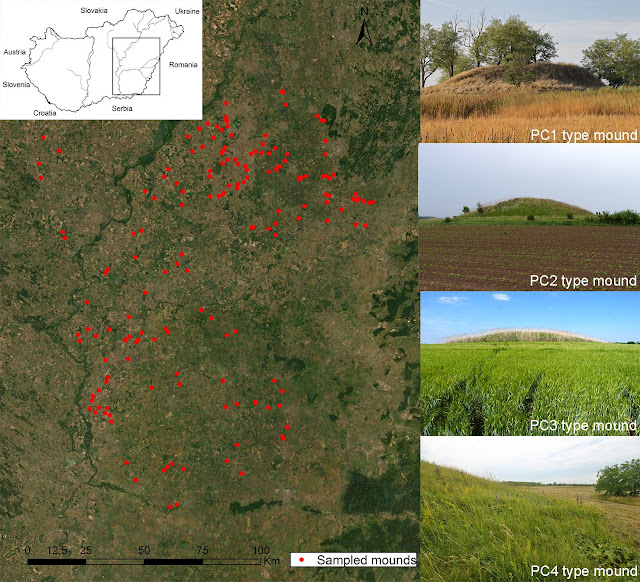In our new paper we give an overview on the threats of human-vectored seed dispersal in protected areas and evaluate the prevention, mitigation and policy measures that currently apply to the control of invasive alien species dispersed on human clothing.
Lukács, K. & Valkó, O. (2021): Human-vectored seed dispersal as a threat to protected areas: Prevention, mitigation and policy. Global Ecology and Conservation 31: e01851. doi: 10.1016/j.gecco.2021.e01851 [IF2020: 3.380]
The paper is open access and freely available (please click here to download).
 |
There are many plant species whose propagules have special morphological adaptations that supports adhesion and dispersal on mammals' fur or human clothing.
|
During fieldwork, hiking or other outdoor activities we often observe that propagules of several plant species are attached on our clothing or footwear. Epiantropochory is a special dispersal type, during which the propagules can achieve long-distance dispersal. Due to the increasing global population and mobility, people can act as super-effective dispersal vectors, enabling cloth-dispersed propagules to cross several geographical barriers and travel between habitats, regions or even continents. The ability for epiantropochory has been documented for almost 450 plant species so far, and with more research, this number will probably increase considerably. From the conservation viewpoint, it is important that most of the cloth-dispersed plant species are considered as weeds, and in some cases, cloth-dispersal can be a starting point for their invasion.
Long-distance transportation networks (air, water, railway and highway) are responsible for the international spread of invasive alien species and the development of tourism-related infrastructure (roads, buildings, hiking trails) increases the local spread of these problematic species within protected areas. Unintended seed dispersal on clothing and footwear can also affect those areas of the nature reserves which are not exposed to the mass invasions caused by vehicles, construction works, trade or agriculture. Due to the increasing pressure of tourism, we can expect that the importance of human-vectored seed dispersal as a threat for introducing invasive alien species will increase rapidly; which issue should be properly addressed by biosecurity measures in order to detect, control and manage the spreading of these harmful organisms.
 |
The propagules of brome species (Bromus spp.) can be very annoying during the seed ripening season. Photo and leg of Csaba Tölgyesi :)
|
In our study, we collected those biosecurity measures which currently apply to the control of invasive alien species dispersed on human clothing. We also extracted relevant findings from studies on human-vectored dispersal for giving recommendations in order to improve policy measures aiming the prevention and mitigation of the spread of propagules of invasive alien species on clothing.
 |
In this figure we summarize the most important measures of prevention, early detection and management that can be applied against the spread of invasive alien species by human-vectored seed dispersal on cloths.
|
Please see below the summary of the paper.
Abstract
The
growing global population size and the increasing mobility of people
can make humans as a potentially super-effective dispersal vector of
plant propagules. Therefore, human-vectored dispersal (HVD) on clothing
and footwear can be an effective way of the dispersal of invasive alien
species (IAS). This can be especially problematic in protected areas,
which are not exposed to the mass invasions caused by vehicles,
construction works, trade or agriculture, but still exposed to HVD by
tourists. In this study, we collected those biosecurity measures which
currently apply to the control of IAS dispersed on human clothing. We
also extracted relevant findings from studies on HVD for giving
recommendations in order to improve policy measures aiming the
prevention and mitigation of the spread of propagules of IAS on
clothing. Even though many peculiarities of HVD are already known, e.g.,
retention potential of different fabric and cloth types, traits of the
species of the most successful IAS dispersed by HVD and potential
dispersal efficiency of HVD, we found that current IAS control measures
usually do not consider and do not address sufficiently the threats
represented by HVD on cloths. We suggest a number of voluntary and
institutional measures that could be easily applied to decrease the
chance of dispersing IAS by HVD, including information, self-regulation,
legislation, quarantine measures, monitoring, interception and visitor management.




